

The Kilmainham Gaol Tour: One Of The Best Tours In Dublin (All You Need To Know)
By Author James March
Posted on Last updated: December 31, 2023
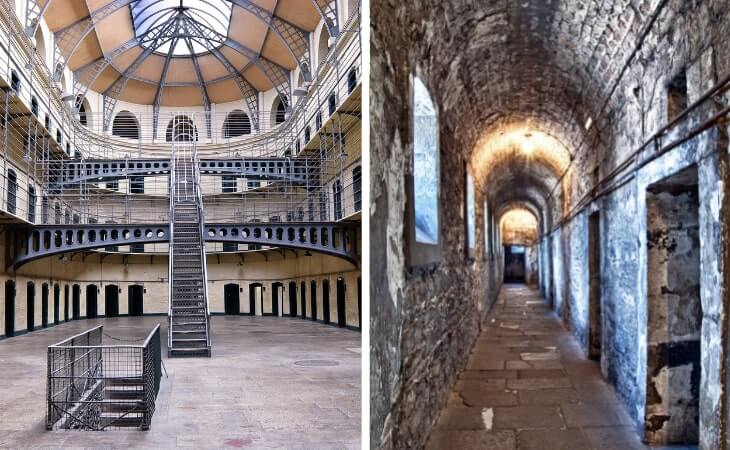
A visit to Kilmainham Gaol (Jail) is arguably one of the best things to do in Dublin .
Built back in 1796 and initially known as the ‘new gaol’ in order to differentiate it from the dungeon it was replacing, the Kilmainham Gaol Museum is a fascinating place to explore.
Over the course of its life as a working prison, it housed many a notable name while also playing witness to the executions of several leaders of the 1916 Rising.
Below, you’ll get the lowdown on the Kilmainham Gaol tour, where to grab parking, how to get there via public transport and more handy info.
Table of Contents
Some quick need-to-knows about Kilmainham Gaol
Although a visit to the Kilmainham Gaol Museum is fairly straightforward, there are a few need-to-knows that’ll make your visit that bit more enjoyable.
1. Location
As you might have guessed by its name, Kilmainham Gaol is located in Kilmainham… It’s a 15-minute walk from the Irish Museum of Modern Art and a 25-minute walk from both the Phoenix Park and the Guinness Storehouse .
2. Opening hours
The Kilmainham Gaol opening hours differ slightly, depending on what time of year you visit (though the time differences are so small that they shouldn’t affect your itinerary too much).
- September to June: 9:30 – 17:15
- July & August: 9:30 – 17:30
3. Admission
Not only is Kilmainham Gaol one of the best museums in Dublin – it’s one of the most fairly priced, too (especially as the tour is guided). Kilmainham Gaol tickets will set you back:
- Adult: €8
- Senior 60+): €6
- Student: €4
- Child (12-17): €4
- Family (Two adults & 2-3 children 12-17): €20
Though there are no car parking facilities at Kilmainham Gaol, parking is available at the nearby Irish Museum of Modern Art/Royal Hospital Kilmainham. Access is via East Gate on Military Road. The car park is just a 5-minute walk to the Gaol.
5. Getting there by public transport
There are four Dublin buses that drop you close to the Kilmainham Gaol museum so consider jumping on any of these:
- No. 69, 79 from Aston Quay, Dublin 2
- No. 13 & 40 from O’Connell Street , Dublin 1, or College Green Dublin 2
- If you’d prefer to go by the Luas Tram, then take the red line. Your nearest stop will be Suir Road
Kilmainham Gaol history

Photos via Shutterstock
Dublin’s infamous prison was built back in 1796 and was initially known as the ‘new gaol’ in order to differentiate it from the dungeon it was replacing.
Despite the new premises, conditions inside Kilmainham weren’t a whole lot better. With no segregation of prisoners, men, women and children were incarcerated together, with up to 5 in each cell and only a single candle for light and heat.
The poor conditions meant that most of the prisoners’ time was spent in the cold and dark, while each candle had to last for up to two weeks.
Things would eventually get a little warmer for certain adult prisoners who would be transported to Australia as convicts.
Irish Nationalism and 1916
From the beginning, the prison had powerful ties to Irish Nationalism and actually housed its first political prisoner in the same year that it opened!
Seven years later, the leader of the 1803 Irish rebellion, Robert Emmet, was incarcerated at Kilmainham before being hanged for high treason.
But Kilmainham is probably most famous for its role in the imprisonment and executions of the leaders of the 1916 Easter Rising . Of the 90 people sentenced to death, fifteen were executed at Kilmainham, including Proclamation of the Republic signatories Patrick Pearse, Thomas Clarke and James Connolly.
Restoration and life as a museum
Following the end of the Irish Civil War, the prison closed due to it being seen as the symbol of oppression and a difficult past.
While interest in re-opening the prison as a museum to Irish Nationalism was strong, over 40 years passed before Kilmainham was able to be restored, and it finally opened to the public in April 1966.
These days, Kilmainham Gaol is one of the biggest unoccupied prisons in Europe and it’s one of the most evocative symbols of Dublin and Ireland’s turbulent history.
Things you’ll discover on the Kilmainham Gaol tour
One of the reasons the Kilmainham Gaol tour is one of the most popular places to visit in Dublin is due to the sheer number of things there is to see and do.
Below, you’ll find info on the various corners of the building you’ll explore and the stories you’ll hear on the Kilmainham Gaol tour.
1. The building

Taking 10 years to build, construction began on the new gaol in 1786 and would cost the Grand Jury of the County of Dublin £22,000 by the time it was finished (a hefty sum of money in those days!).
The gaolers lived in the central front block, while the two wings contained cells for the prisoners. The interior buildings and yards are surrounded by a thick wall which measures between 30′ and 50′ depending on its location, while the main entrance was the formidable doorway (with the five snakes above it).
Just outside this entrance was where public hangings took place until the late nineteenth century and remains of the fixtures for the gallows can still be seen.
2. Prison life

Photo by matthi (Shutterstock)
As we touched on earlier, conditions at the prison were pretty squalid despite being billed as a higher quality replacement for the old gaol (not to mention the cost!).
The same problems that dogged the old gaol raised their ugly head again at Kilmainham, mainly thanks to the overcrowding, which led to disease and poor hygiene.
The famine years were particularly bad, and food rations during this period were particularly low. Yet amazingly, people were committing crimes to be allowed entry into the prison due to the small amount of regular food available.
Prisoners also worked within the Gaol. A sentence of hard labour for a man consisted of manually breaking stones in the Stonebreakers’ Yard, and for women meant working in the laundry.
3. The transportation of convicts

Ironically, the main reason the gaol suffered from overcrowding was due to people waiting to leave. From the time it opened until the early 1850s, Kilmainham Gaol was used as a depot for convicts from the northeast of Ireland who had been sentenced to transportation to Australia.
Here they would wait before being transferred to a port in either Dublin or Cork, where they would board great convict ships bound for Australian penal colonies.
Over 4,000 prisoners were processed through Kilmainham during this period, and most of them were either petty criminals or political prisoners.
4. The turbulent 1910 – 1924 period

The 14 years between 1910 and 1924 represented what Kilmainham would eventually become most famous for. From the height of overcrowding in the mid-19th century, the last two decades of the century actually saw a decline in the prison population, and Kilmainham was closed as a money-saving exercise by the government.
In 1910, those in Kilmainham were transferred to Mountjoy Prison, and a year later, Kilmainham Gaol was handed over to the military (the British Army) for their use from then on.
From the outbreak of World War I in 1914, they used it as living quarters for new recruits and as a military detention centre for soldiers.
5. The executions

Taking advantage of Great Britain’s resources being ploughed into the war, the Easter Rising of 1916 took place when the enemy was at its most distracted.
After six days of fighting, the Irish rebels eventually surrendered, and many were incarcerated in Kilmainham.
Between the 3rd and 12th of May 1916, fourteen men were executed by firing squad in the Stonebreakers’ Yard of Kilmainham Gaol.
Seven of them had been the signatories of the Proclamation and their names are all still significant today. They were Thomas Clarke, Seán Mac Diarmada, Thomas MacDonagh, Patrick Pearse, Éamonn Ceannt, James Connolly, and Joseph Plunkett.
Things to do near the Kilmainham Gaol Museum
One of the beauties of the Kilmainham Gaol tour is that, when you finish up, you’re a short walk from some of the best places to visit in Dublin .
Below, you’ll find a handful of things to see and do a stone’s throw from the Kilmainham Gaol Museum (plus places to eat and where to grab a post-adventure pint!).
1. Irish National War Memorial Gardens (12-minute walk)

Photo by Patrycja St (Shutterstock)
To learn about some more people (many more, in fact) who gave up their lives in the name of freedom and their country, make the short 12-minute walk over to the Irish National War Memorial Gardens. Designed by Sir Edwin Luytens, it’s a peaceful handsome spot featuring a domed temple and sunken gardens.
2. Irish Museum of Modern Art (15-minute walk)
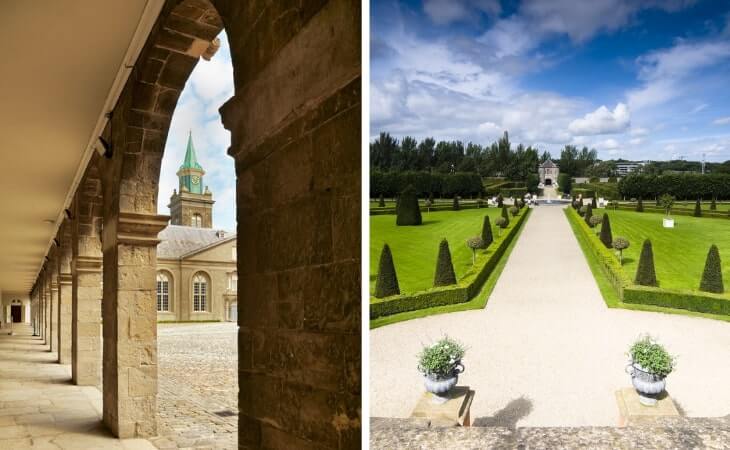
Located in a renovated 17th-century hospital just 15 minutes from the Kilmainham Gaol tour, the Irish Museum of Modern Art is home to the National Collection of Modern and contemporary art, with over 3,500 artworks by Irish and International artists. The mix of vivid modern art within the historic walls of the old hospital is a clash of the senses and makes for a really interesting visit.
3. Phoenix Park (23-minute walk)

If you want some fresh air after the tour or if your head needs a little clearing, there’s no better place to do that than Phoenix Park . One of the largest city parks in Europe, it’s a pleasant 23-minute walk away just across the Liffey and there are a bunch of interesting sights inside, such as the Wellington Monument and Dublin Zoo .
4. Guinness Storehouse (22-minute walk)
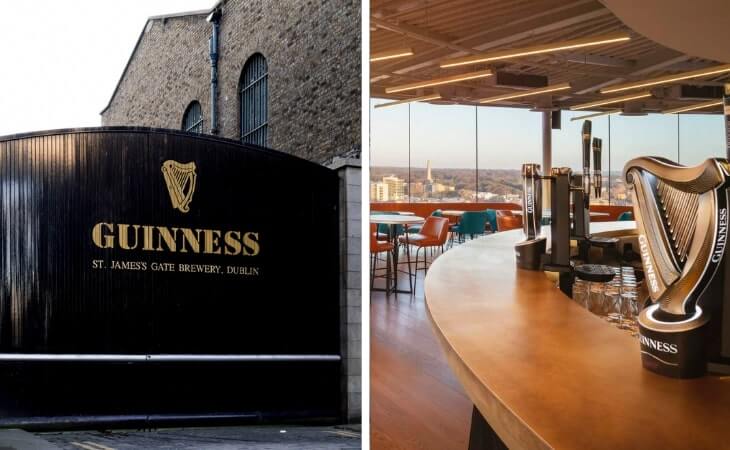
Courtesy Diageo Ireland Brand Homes via Ireland’s Content Pool
If you’d like to raise a glass to Pearse and Connolly at Ireland’s most iconic brewery, then make the 22-minute walk east over to the Guinness Storehouse . While learning about the history, the brewing process and the legendary adverts is great. It’s the rooftop bar that really makes the Storehouse a cracking visit.
FAQs about Kilmainham Gaol in Dublin
We’ve had a lot of questions over the years asking about everything from ‘Why is Kilmainham Gaol famous?’ (for its historical significance) to ‘Is the Kilmainham Jail tour worth doing?’ (it is!).
In the section below, we’ve popped in the most FAQs that we’ve received. If you have a question that we haven’t tackled, ask away in the comments section below.
How long is the Kilmainham jail tour?
You’ll want to allow around 1.5 hours to get through the entire Kilmainham Gaol museum tour. This includes checking in time.
How much does it cost to visit Kilmainham Gaol?
Kilmainham Gaol tickets are €8 for adults, € for seniors (60+), €4 for students and kids aged 12 to 17. There’s also a family ticket for €20.
Is the Kilmainham Gaol Museum really worth going to?
Yes – the Kilmainham Gaol tour is absolutely fantastic and it’ll grip you from start to end. Expect many tales, legends and Kilmainham Gaol facts.
This site uses Akismet to reduce spam. Learn how your comment data is processed .
Monday 6th of May 2019
OMG YES!! I can't stress enough how absolutely AMAZING this tour was, perhaps even the best of my entire trip which included other wonderful places in Ireland, as well as Scotland and France. It was a sort of last minute decision and I was the only one in my group who knew any of the history surrounding the Kilmanhaim Gaol but every single person in my group LOVED the tour and learned so much from the extremely knowledgeable tour guides. At the end there is a small museum, don't miss the letter from a 17 yr old young man to his mother before he is executed. It haunts me to this day and I have such enormous respect and admiration for every brave soul that fought tirelessly for their beloved free Ireland.
Tuesday 7th of May 2019
Glad you enjoyed it Karen. It's been a couple of years since I last did it. Thinking about visiting the weekend after next! Great spot!
- Click to open search
- Open the main navigation
Kilmainham Gaol
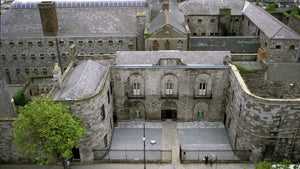
- Family friendly
- Pre-booking essential
Dublin's Kilmainham Gaol held some of the most famous political and military leaders in Irish history such as Robert Emmet, Charles Stewart Parnell, the 1916 Rising leaders and Eamon de Valera.
If for no other reason, Kilmainham Gaol in Dublin would be remarkable for being the biggest unoccupied gaol in these islands. As such, it gives the visitor a dramatic and realistic insight into what is was like to have been confined in one of these forbidding bastions of punishment and correction between 1796 when it opened and 1924 when it closed. It offers a panoramic insight into some of the most profound, disturbing and inspirational themes of modern Irish history. Leaders of the rebellions of 1798, 1803, 1848, 1867 and 1916 were detained and sometimes executed here. The Gaol also played a role during the harsh Famine times.
The visit includes a 1 hour guided tour and exhibition. It is a very busy site. Pre booking online is essential. You don't need to print out tickets, just retain your order number.
Only the ground floor is wheelchair accessible and a ground floor tour can be organised if needed; please email (don't book online in this case).
Buggies are not permitted on the tour and it is not really appropriate for younger children under 6 years.
Information leaflets are available online in English, Gaeilge, Español, Italiano, Deutsche, and Français.
Please see the website for information on temporary exhibitions.
Paid parking is available at the nearby IMMA for a small fee.
If you are unable to do a tour, you are free to visit the museum section and to enjoy the café on site.
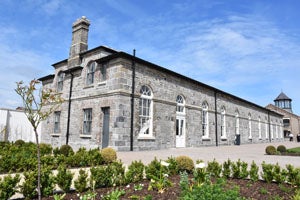

- Top Attractions
Tourist attractions
Kilmainham gaol.
Established in 1796, Kilmainham Gaol is a former prison in Dublin where numerous revolutionaries were locked up and executed.
Old Kilmainham Gaol, which opened in 1796, was the home of many of those involved in the Irish independence struggle for over 100 years. Today you can see the cells and communal areas that remained untouched by the countless executions.
Kilmainham Prison continues to hold a very special place in the memory of the Irish people because it was through the struggle of the brave patriots who were imprisoned and killed that Ireland gained its independence.
Life in Kilmainham Gaol
All types of prisoners were imprisoned at Kilmainham prison, including women, men and small children accused of robbery. The damp, cold and dark cells were only lit up and heated by a small candle.
When the Irish Potato Famine hit the country in 1845, thousands of people stole food to survive and this deteriorated the conditions in the jails since the cells were packed with people. Nevertheless, many preferred to stay in prison than being free and starve to death .
The Irish Free State closed the Gaol in 1924, previously releasing Éamon de Valera, who years later would become President of Ireland.
Guided tour
The guided tour of Kilmainham Gaol starts off at the prison’s chapel, where Joseph Plunkett married Grace Gifford shortly before being executed for participating in the Easter Rising.
Next, follow your guide to visit the cells, still gloomy and dank and continue to the patio where the prisoners were executed . Once the guided tour comes to an end, you can visit the museum that features various objects that once belonged to the prisoners.
Indispensable
Kilmainham Gaol remains a historic building, a symbol of years of brutality and suffering . In our opinion, visiting the Gaol is an interesting way to explore Ireland’s history.
The entrance ticket includes a 1-hour guided tour.
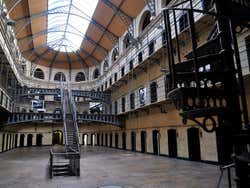
Inchicore road 8
Every day from 9:30 am - 5:10 pm
Adults: € 8 ( US$ 8.80) Over 60s: € 6 ( US$ 6.60) Students and children 12 - 17: € 4 ( US$ 4.40) Children under 12: Free entry Families: 20 EUR
Buses : Old Kilmainham , lines 78A and 206; Emmet Rd. (Kilmainham Cross) , lines 51B, 51C, 78A and 206
Nearby places
Irish Museum of Modern Art (657 m) Guinness Storehouse (1.5 km) Decorative Arts & History Museum (1.8 km) Phoenix Park (2.1 km) Jameson Distillery Bow St (2.3 km)
You may also be interested in

Guinness Storehouse
The Guinness Storehouse was initially built as a fermentation plant for St. James’ Gate Brewery in 1904. In 1988 it was closed, and a decade later, in 2000, it was transformed into a 7-floor storehouse open to the general public.
Take a few days to discover Ireland’s capital, famous for its Georgian architectural elements, its famous black lager available in its numerous pubs and bars, and explore its most-visited monuments such as Trinity College, Temple Bar and St. Patrick's Cathedral.
Dublin Bus
Close

Kilmainham Gaol
For a hauntingly vivid look back through key events in Ireland’s history, a trip to Kilmainham Gaol is a must. Kilmainham Gaol has played an important part in Irish history, as many leaders of Irish rebellions were imprisoned and some executed in the jail. It is now an award-winning museum, and one of Dublin's most popular attractions.
History of Kilmainham Gaol
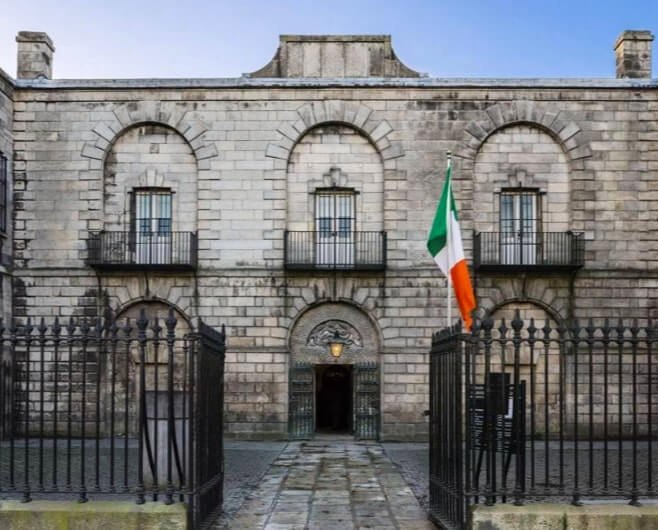
When it was first built in 1796, Kilmainham Gaol was called the 'New Gaol' to distinguish it from the old jail it was intended to replace - a building not too different to a dungeon, just a few hundred metres from the present site. Over the 140 years it served as a prison, its cells held many of the most famous people involved in the campaign for Irish independence. The leaders of the 1916 Easter Rising were held and executed here, and the last prisoner held in the jail was Eamon de Valera.
Kilmainham Gaol was abandoned as a jail in 1924, it now houses a museum on the history of Irish nationalism and offers guided tours of the building.
Who was imprisioned at Kilmainham Gaol?
The history of modern Ireland is soaked into the walls of Kilmainham. Political prisoners were kept here (and sometimes executed) from the rebellion of 1798 to the Irish Civil War of 1922-23. Beside them were thousands of ordinary people from all over Ireland, jailed for all sorts of crimes and waiting to be transported to Australia. Children were sometimes arrested for petty theft, the youngest said to be a seven year-old boy.
Kilmainham Gaol Tours
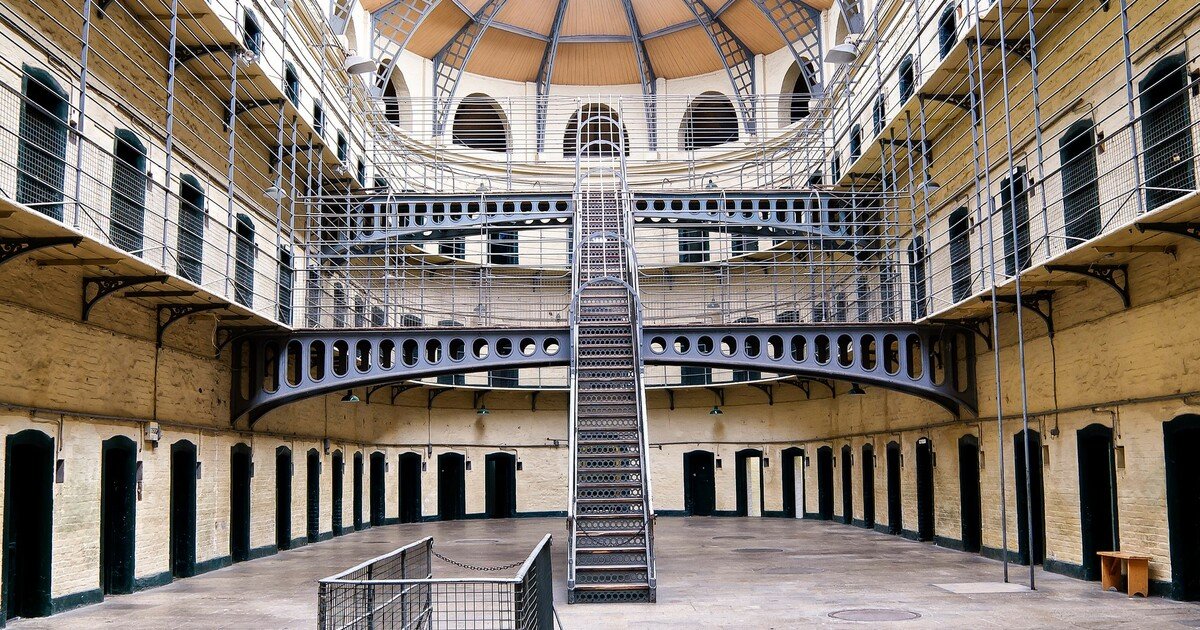
The guided tours at Kilmainham Gaol offer an insight into some of the most defining and inspirational events of modern Irish history. Leaders of the rebellions of 1798, 1803, 1848, 1867 and 1916 were detained and sometimes executed here. The Gaol also played a role during the harsh Famine times.
Guided tours last approximately 1-hour, and this includes the exhibition.
Exhibitions and Displays
Now this powerful and absorbing place is one of the most popular sights in Dublin – so popular that you should book your tour in advance. On the top floor you’ll find exhibitions linked to the world’s political prisoners; recent examples include a display on Nelson Mandela, and another about the struggles of the suffragette movement.
Step out into the fresh air again, overlooking Phoenix Park and Dublin, and take a deep breath. Nearby, you’ll find the Royal Hospital, home to the Irish Museum of Modern Art, or you can remember the spirits of the past while enjoying coffee in the more contemporary surrounds of the Lime Tree Café or Storyboard in Islandbridge.
Kilmainham Gaol Tickets
Tickets are limited and during busier times it can be hard for guests to gain access on selected dates. For that reason, pre-booking online from Kilmainham Gaol is highly recommened.
Kilmainham Gaol in the Movies
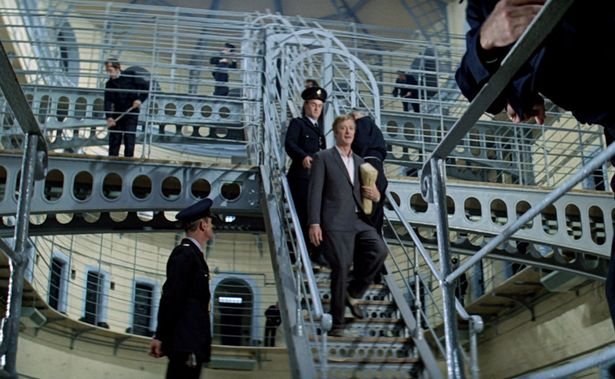
The prison is a popular location for many films. Movies filmed at Kilmainham Gaol include The Quare Fellow (1962), The Italian Job (1969), and The Last Remake of Beau Geste (1977) In the Name of the Father (1993), Michael Collins (1996), The Escapist (2008), and the Rebellion drama by RTÉ was shot within the prison too. It is also the scene for this haunting rendition of Grace by Dubliners Róisín O, Aoife Scott, Danny O'Reilly
Getting to Kilmainham Gaol
Kilmainham Gaol Museum is located 3.5km from Dublin City. Other attractions close to Kilmainham Gaol include Dublin Zoo and Guinness Storehouse .
By Hop-On Hop-Off Tour
The DoDublin Hop-On Hop-Off Tour no longer stops outside Kilmainham Gaol but it is a short walk away from the stop at the Irish Museum of Morern Art (IMMA)
Dublin Bus Routes 69 & 79 from Aston Quay, or Routes 13 & 40 from O’Connell St or Dame St. Visit the Dublin Bus website to plan your trip.
Kilmainham Gaol is on the outskirts of the city, and is 3km from Temple Bar. If you choose to walk, it's a great chance to see some lovely parts of Dublin, and some iconic buildings. If you walk along the Liffey, check out the Four Courts, Heuston Station, and Collins Barracks' Buildings. Take a stroll through Royal Hospital Kilmainham you'll be rewarded with some of the city's most beautiful gardens on the way. Exiting on the Kilmainham side of the Gardens will bring you to Kilmainham Gaol.
There is a Dublin Bike station right outside the museum. If you are cycling in the area, it's a good opportunity to explore the vast Phoenix Park nearby!
Suir Road on the Luas Red Line is the closest Luas stop - this is 750 metres away.
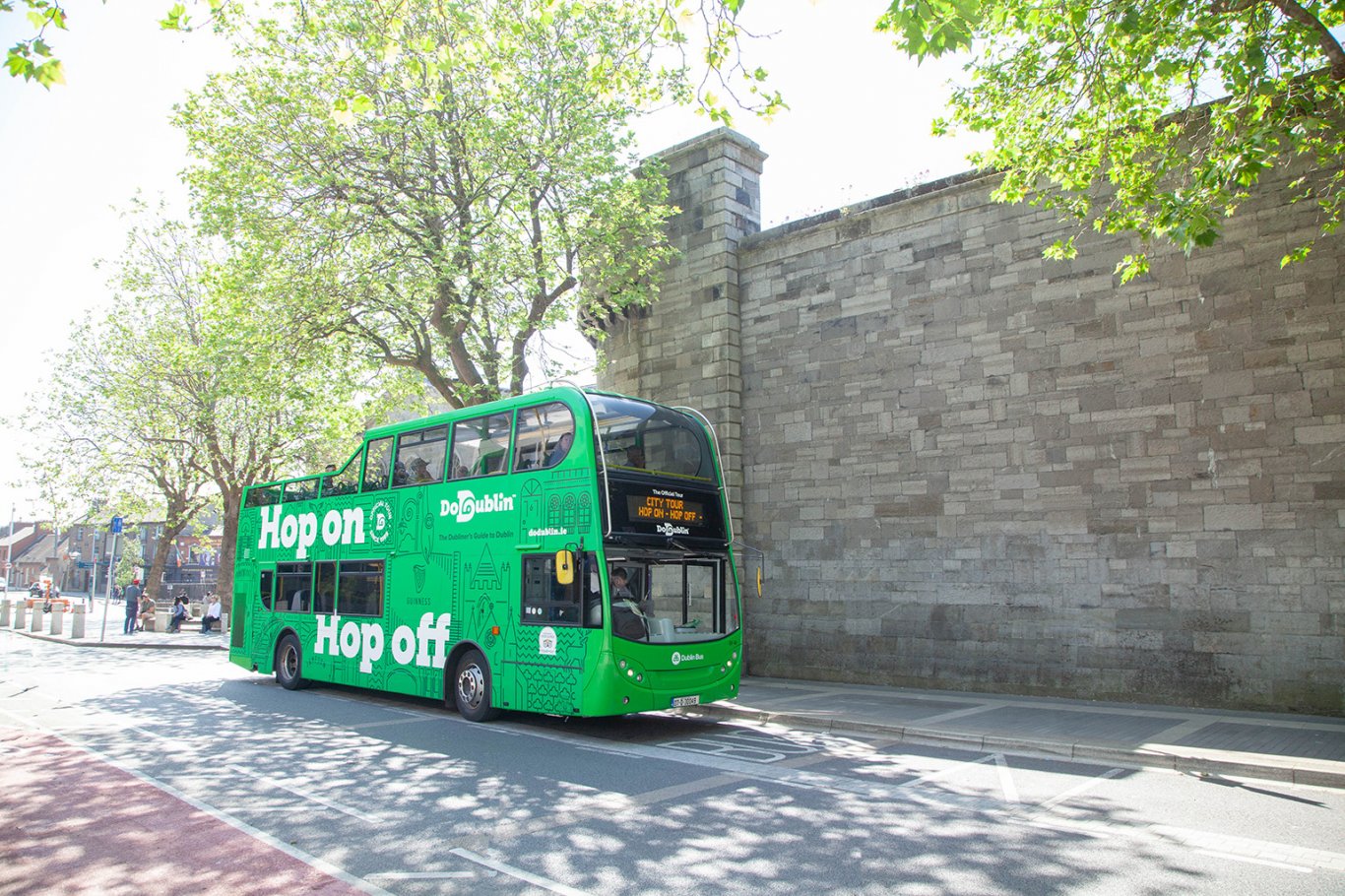
Heritage Ireland
Kilmainham gaol museum.
BOOK ONLINE
See all opening times
Please note that no third-party organisations are authorised to sell tickets to Kilmainham Gaol. Tickets bought from other sites, including ticketing resale platforms, will not be valid and such ticket-holders will be refused entry. Furthermore, we are aware that there are fraudulent websites purporting to www.kilmainhamgaolmuseum.ie . These websites and domain names look similar, but have no connection whatsoever to the Office of Public Works or Kilmainham Gaol. We urge extra vigilance, as any tickets purchased from fraudulent sites cannot be honoured.
The only legitimate website to purchase tickets from for this site is www.kilmainhamgaolmuseum.ie.
Adult €8 Senior (60+): €6 Child (12-17): €4 Child (under 12): Free but require a ticket Student (valid student ID required): €4 Family (Two adults & 2/3 children 12-17): €20
Pre-booking tickets online is essential.
Please note that no third-party organisations have authorisation to sell tickets to Kilmainham Gaol. Tickets bought from other sites- including ticketing resale platforms -will not be valid and such ticket-holders will be refused entry.
Furthermore, we are aware that there are fraudulent websites purporting to www.kilmainhamgaolmuseum.ie . These websites and domain names look similar, but have no connection whatsoever to the Office of Public Works or Kilmainham Gaol. We urge extra vigilance, as any tickets purchased from fraudulent sites cannot be honoured.
For wheelchair users or visitors who require special assistance please email [email protected] in advance of booking. Group bookings (10 tickets+) please email [email protected]
Getting here
Inchicore Road, Kilmainham, Dublin 8 D08 T2X5
Get Directions
Kilmainham Gaol is one of the largest unoccupied gaols in Europe. It opened in 1796 as the new county gaol for Dublin and finally shut its doors as such in 1924. During that period it witnessed some of the most heroic and tragic events in Ireland’s emergence as a modern nation.
Among those detained – and in some cases executed – here were leaders of the rebellions of 1798, 1803, 1848, 1867 and 1916, as well as members of the Irish republican movement during the War of Independence and Civil War.
Names like Henry Joy McCracken, Robert Emmet, Anne Devlin and Charles Stewart Parnell will always be associated with the building. Not to be forgotten, however, are the thousands of men, women and children that Kilmainham held in its capacity as county gaol.
Kilmainham Gaol is now a major museum. The tour of the prison includes an audio-visual presentation.
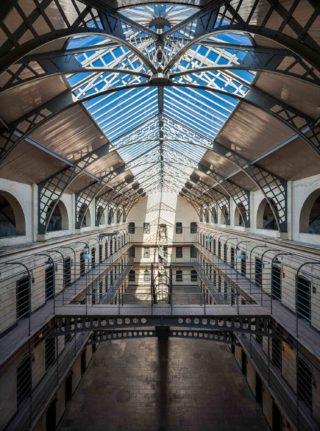
Opening Times
Open All year .
Closed 24, 25,26 and 27 December
Daily access by guided tour only. Pre-booking is essential. Please allow 90 minutes for your visit. As part of the tour is outdoors, visitors should dress appropriately for the weather.
Please note that this is a very busy site all year round and visitors may experience delays at certain times. During winter months the interior of the Gaol is very cold — please dress appropriately.
01 453 5984
By Car – Public car park close to site.
By Bus – Take the X8 to Cashel and walk 500m from the centre of Cashel town off the Dublin Road.
By Train – The nearest train station is Thurles.
Click the relevant icon below to open Maps directions
Getting Here
3.5km from centre of Dublin.
Open location in Google Maps
Facilities Restrictions
- Baby Changing
- Bicycle Parking
- Card Accepted
- Guided tours
Restrictions
- Access by Guided Tour Only
- Assistance dogs only
- Hold hand rail
- Uneven walkways
Social Guide
Download, print and read our social guide (PDF) about visiting Kilmainham Gaol. This will help first-time visitors, families and people with developmental and learning disabilities to prepare for a visit to Kilmainham Gaol.
Download the Social Guide (Covid-19)
Nearby sites to visit
Irish national war memorial gardens.
Relax and reflect in this beautiful garden monument
Approx. 0.5 km from Kilmainham Gaol Museum
Royal Hospital Kilmainham
One of Dublin's most iconic buildings and Ireland’s foremost example of fine 17th century architecture
Approx. 0.7 km from Kilmainham Gaol Museum
Phoenix Park – People’s Flower Gardens
Enjoy Victorian floriculture at its best
Approx. 1.1 km from Kilmainham Gaol Museum
You might also like

Ionad Cultúrtha an Phiarsaigh Conamara- Pearse’s Cottage and Visitor Centre
A cottage steeped in revolutionary history and Gaelic culture

Pearse Museum – St. Enda’s Park
An enthralling chapter in the story of 1916
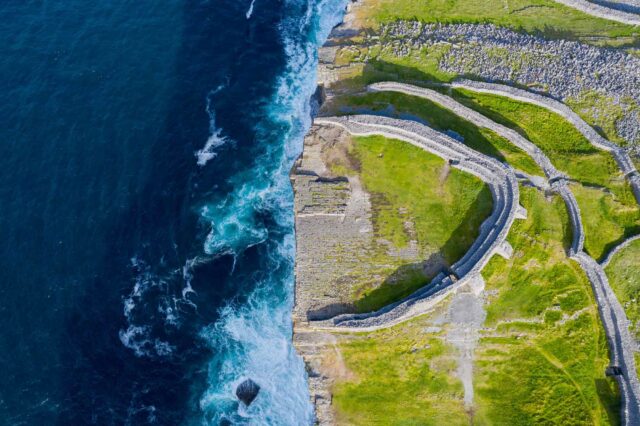
Heritage Card
Unlimited access to Ireland’s past
Buy one today
Join our mailing list
Are you happy to receive marketing material via email from Heritage Ireland
You can unsubscribe at any time. For information about our privacy policy, please visit our Privacy Policy


Kilmainham Gaol Museum: A Visitor’s Guide to Dublin’s Historic Prison
Sharing is caring!
- Facebook 1.1K

Kilmainham Gaol Museum: A Visitor’s Guide to Dublin’s Historic Prison
Kilmainham Gaol Museum stands as a powerful testament to Ireland’s turbulent history and the fight for independence. This former prison, located in Dublin, has witnessed the incarceration of many notable figures who played pivotal roles in shaping Ireland’s destiny.
Today, it stands as a museum, offering visitors a poignant and immersive experience. In this guide, we will delve into the history of Kilmainham Gaol, highlight its key features and provide practical information to help you make the most of your visit.
A Brief History of Kilmainham Gaol:
Kilmainham Gaol has a rich and poignant history that spans over two centuries. It was first built in 1796 and served as a county jail until its closure in 1924. The prison played a central role in Ireland’s struggle for independence, housing many political prisoners during pivotal moments in Irish history, including the 1916 Easter Rising. Today the museum preserves the memory of these events and offers visitors a glimpse into the past.
Exploring the Museum:
As you step inside Kilmainham Gaol Museum, prepare to be transported back in time. The museum provides guided tours that lead visitors through the prison’s halls, cells and exercise yards. Knowledgeable guides share captivating stories and provide insights into the prison’s historical significance. The preserved interior of the gaol offers a stark reminder of the harsh conditions endured by its prisoners.
Key Highlights:
During your visit, be sure to explore the following key highlights of Kilmainham Gaol Museum:
a. Stone Breaker’s Yard: This somber area served as the site of many executions, including those of the leaders of the 1916 Easter Rising. It stands as a powerful reminder of the sacrifices made by those who fought for Irish independence.
b. East Wing: The East Wing houses the restored cells where you can witness the cramped and bleak conditions in which prisoners were held. The walls bear witness to the stories of those who were imprisoned within them.
c. Chapel: The prison’s chapel is a testament to the resilience and faith of the inmates. Its austere beauty and the stories of religious persecution create a poignant atmosphere.
d. Exhibition Areas: The museum features informative exhibits that provide a comprehensive overview of the prison’s history, the political climate of the time and the stories of the men, women and children who were confined within its walls.
Planning Your Visit:
To ensure a smooth and enriching experience at Kilmainham Gaol Museum, consider the following tips:
a. Booking: Due to its popularity, it is advisable to book your tickets in advance, especially during peak tourist seasons. This will help you secure your preferred tour time and avoid long queues.
b. Guided Tours: The museum offers guided tours only and they are included in the ticket price. The knowledgeable guides enhance the experience by providing context, answering questions and bringing the prison’s history to life.
c. Duration: The guided tour usually lasts approximately 60 minutes but allows extra time for browsing the exhibition areas and reflecting on your experience.
d. Accessibility: The museum is committed to providing accessibility for all visitors. It offers facilities for individuals with disabilities, including wheelchair access and accessible restrooms.
e. Photography: Photography is not permitted during the tour, as it can disrupt the experience and respect for the historical significance of the site. However, you can capture memories in designated areas outside the prison.
Reflecting on the Experience:
After your visit, take a moment to reflect on the significance of Kilmainham Gaol and its place in Irish history.
Getting to Kilmainham Gaol Museum:
Located in Dublin’s western part, Kilmainham Gaol Museum is easily accessible by various means of transportation. Here are a few options to consider:
Public Transport:
Dublin Bus operates several routes that pass near Kilmainham Gaol, including bus numbers 13, 40 and 79. Check the Dublin Bus website or inquire at the nearest bus stop for the most convenient route based on your location.
Luas Tram:
The red line of Dublin’s light rail system, known as the Luas, has a stop called ‘James’s’ which is within walking distance of Kilmainham Gaol. Simply disembark at James’s stop and follow the signs directing you to the museum.
Taxi or Ride-Sharing Services:
Taxis and ride-sharing services like Uber are readily available throughout Dublin. Simply provide the driver with the address of Kilmainham Gaol Museum (Inchicore Road, Kilmainham, Dublin 8) and they will drop you off at the entrance.
Self-Driving:
If you have access to a car, you can easily reach Kilmainham Gaol Museum by following the N4 or N7 roads towards the city center. The museum provides on-site parking, although availability may be limited during peak times.
Walking or Cycling:
For those staying in central Dublin, walking or cycling to Kilmainham Gaol Museum is a viable option. It’s approximately a 30-minute walk from the city center and there are designated bike lanes in certain areas.
Note: It’s always advisable to check public transport schedules or use navigation apps to plan your journey in advance, as this will ensure you arrive at the museum on time and without any unnecessary stress.
Nearby Attractions:
While visiting Kilmainham Gaol Museum, consider exploring other attractions in the surrounding area. Some notable places of interest within proximity include:
a. Irish Museum of Modern Art (IMMA):
Located adjacent to Kilmainham Gaol, IMMA houses a vast collection of modern and contemporary art in a stunning 17th-century building.
b. War Memorial Gardens:
Situated along the banks of the River Liffey, these beautifully landscaped gardens commemorate the Irish soldiers who lost their lives during World War I.
c. Phoenix Park:
As one of the largest enclosed parks in Europe, Phoenix Park offers picturesque landscapes, historical landmarks and the opportunity to see wild deer roaming freely.
d. Guinness Storehouse:
Just a short distance away, the Guinness Storehouse allows visitors to discover the history and brewing process behind Ireland’s most famous stout.
Visitor Amenities:
Kilmainham Gaol Museum provides essential visitor amenities to enhance your experience, including:
a. Visitor Center:
The museum has a visitor center where you can purchase tickets, obtain information and browse a selection of books and souvenirs related to Irish history.
b. Restrooms:
Clean and accessible restrooms are available on-site for visitor convenience.
Should you wish to grab a bite or enjoy a hot beverage, a café is located within the museum premises, offering refreshments to visitors.
d. Gift Shop:
At the end of your visit, consider exploring the gift shop which offers a range of books, souvenirs and mementos related to Kilmainham Gaol and Irish history.
With this comprehensive visitor’s guide, you are well-equipped to embark on a memorable and insightful journey through Kilmainham Gaol Museum.
Exploring Kilmainham Village, Dublin: A Fascinating Private Walking Tour

Dublin’s oldest suburb, Kilmainham, holds a wealth of historical significance and intriguing stories waiting to be discovered. Offering a unique perspective on the city’s past, a private walking tour in Kilmainham Village allows visitors to immerse themselves in centuries of settlement, uncovering hidden gems and gaining insight into the area’s evolution.
Led by an accredited tour guide and published historian, this 2.5-hour stroll unveils the rich tapestry of Kilmainham’s history, from its early Christian origins to its present-day status as a vibrant urban village.
An Expert Guide and Historical Context:
Embark on this private walking tour with Frank, a knowledgeable guide and accomplished historian holding a PhD in Irish history. With his expertise and passion, Frank brings the past to life, sharing captivating stories and providing valuable historical context throughout the tour. Prepare to be enthralled by his insights and deep understanding of Kilmainham’s development over the centuries.
Unveiling Centuries of Settlement:
As you traverse the streets and narrow lanes of Kilmainham and Inchicore, prepare to delve into centuries of settlement and uncover the layers of history embedded within this ancient suburb. Frank will guide you through the footsteps of early Christian monks, highlight Viking burial grounds and reveal the presence of an ancient order of crusader knights, among other fascinating points of interest. Each step paints a vivid picture of Kilmainham’s diverse past.
Notable Individuals and Contributions:
One of the highlights of the tour is learning about the individuals and groups who played pivotal roles in shaping Kilmainham’s long-term growth. Frank will regale you with stories of those who established important buildings and sites throughout the centuries, shedding light on their contributions and the impact they had on the community. Through their endeavors, Kilmainham transformed from a historical settlement into a vibrant Victorian railway village in the 1800s .
Victorian Railway Village to Trendy Urban Village:

Discover the transformation of Kilmainham from a bustling Victorian railway village to its present-day status as one of Dublin’s coolest urban neighborhoods. Frank will share the evolution of the area, highlighting its architectural heritage, Victorian-era charm and the unique blend of trendy boutiques, cafes and coffee shops that now grace its streets. Experience the vibrant atmosphere and immerse yourself in the contemporary allure of Kilmainham Village.
Practical Information:
To embark on this private walking tour, it is recommended to book in advance to secure your preferred date and time. The tour typically lasts 2.5 hours, offering ample time to explore Kilmainham’s historical sites and engage in meaningful discussions. Wear comfortable shoes and dress appropriately for the weather, as you will be walking through the streets and lanes of the village.
How to spend 24 hours in Dublin

Welcome to MyLocalDublin , where we share the best things to see and do in Ireland’s vibrant capital city. If you only have 24 hours to spend in Dublin, we’ve got the perfect itinerary for you. Follow our guide to make the most of your time in the city as recommended by Tourism Ireland .
Kilmainham Gaol – History And All The Things You Need To Know
Categories Dublin , Where To Go
A trip to the Kilmainham Gaol is probably one of the more sobering experiences should you decide to visit. It is located off the Dublin city center and accessible via public transport.
This place is far from being fun or relaxing tourist attraction, but it is an important part of Ireland’s history. In particular, the Gaol played a significant role in the country’s independence.
This place is no fortress, not a pretty castle or museum . Kilmainham Gaol was a working prison that housed men, women, and children.
Kilmainham Gaol – History And All The Things You Need To Know
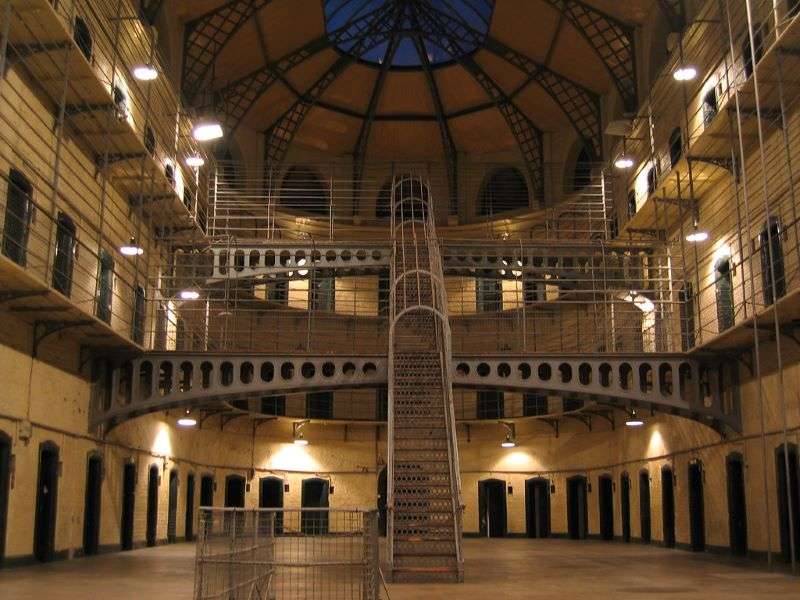
It was in operation from 1787 until 1924. Records say that the youngest child sent here was only seven years old.
The prison housed felons of all ages, sexes, and offenses. Those who had more serious charges were not kept in jail cells but hanged outside.
Thousands of prisoners were also kept here while they await transport to British penal colonies in Australia.
During the time of the Great Potato Famine (1845 – 1852), it was said that many people intentionally broke the law so they’d be sent to the Gaol.
READ MORE: 10 BEST MUSEUMS IN DUBLIN, IRELAND
Irish people back then did this hoping they’d be fed while incarcerated. This situation eventually led to the overcrowding of the prison.
Women and children had to sleep on the floor or hallways without blankets or covering.
Men had to squeeze themselves in 28-square meter cells that are usually good for only five people.
From the late 19th century to the early 20th century, Kilmainham Gaol was infamously tied to its rebel prisoners. A great number of Irish Nationalists were sent here.
Meanwhile, every Irish Republican leader stayed here for various offenses at one time or another.
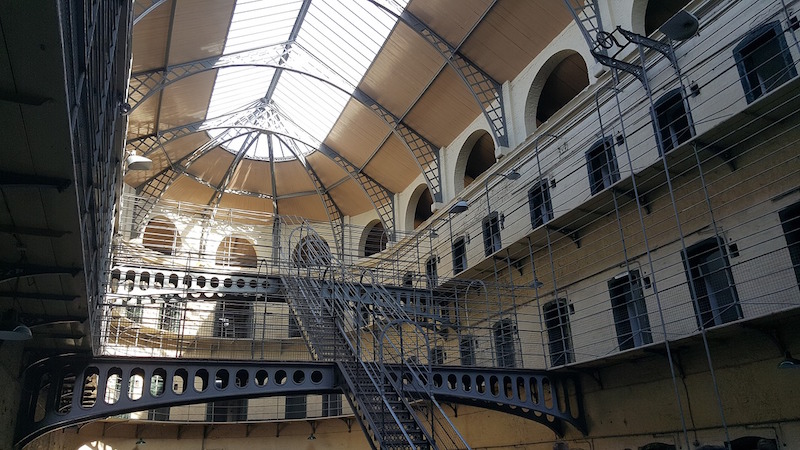
Following 1916 Rising when the riots were quelled by the British Army, its leaders gave themselves up under the orders of Pádraig Pearse.
A lot of those who were part of the Irish Revolution was kept in jail. At the same time, the controversial secret courts-martial also happened under British General John Maxwell.
READ MORE: 30 THINGS TO DO IN DUBLIN, IRELAND
Those tried did not even have access to lawyers, and fifteen of them were executed. Of those fifteen, seven were signatories of the 1916 Proclamation including Pearse.
These executions, instead of containing the nationalist uprising, had the opposite effect. The nationalist movement further gained momentum.
Word spread regarding these executions and it eventually resulted in independence for most of Ireland. Soon after, Kilmainham Gaol ceased its operations and closed in 1924.
Kilmainham Gaol as a working prison may have been closed, but it is now a symbol of Ireland’s painful past.
In 1958, the Kilmainham Gaol Restoration Society was formed. In the 1960s, restorative work was done by a team of dedicated volunteers before the Irish government took over.
In 1971, Kilmainham Gaol reopened as a museum. During the centenary of the 1916 Uprising in 2016, Ireland’s Office of Public Works invested €5 million in refurbishing the site.
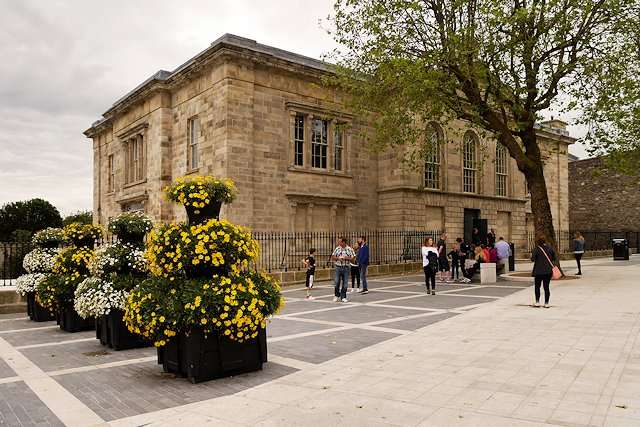
Today, Kilmainham is one of the most visited places in Ireland. It offers guided tours where guests get to see detailed exhibitions about the political and penal history of the prison.
All the restorative work done on Kilmainham are also featured in this exhibition.
There’s also a fascinating feature on the history of Irish Nationalism. This part includes some of the last words and graffiti (written in prison walk) of the executed leaders of the 1916 rebellion.
Apart from the guided tour, today’s Kilmainham also has a tea shop and a museum that spans three floors. Meanwhile, access to the prison is limited and is only allowed during guided tours.
Visitors Information for Kilmainham Gaol
Opening times.
Kilmainham Gaol Museum is open all year round, except the 24th, 25th, and 26th of December
October – March 9:30 – 17:30 (last admission at 16:15)
April & May 9:00 – 18:00 (last admission at 16:45)
June, July & August 9:00 – 19:00 (last admission at 17:45)
September 9:00 – 18:00 (last admission at 16:45)
Admission Fee
Online prices – Adult €8, Senior €6, Child/Student €4 and Family €20. Walk-up prices* – Adult €9, Senior €7, Child/Student €5 and Family €23
Contact Information
Address: Kilmainham Gaol Museum Visitor Centre, Kilmainham Courthouse, Inchicore Road, Kilmainham, Dublin 8, Ireland. D08 RK28
Email: [email protected]
Phone: +353 1 4535984
Kilmainham Gaol Tours
If you want to join tours, below are our recommended hop-on hop-off bus tours to Kilmainham Gaol.

Hi, I’m Christine – a full-time traveler and career woman. Although I’m from the Philippines, my location independent career took me to over 40 countries for the past 8 years. I also lived in 3 continents – from the Caribbean, South East Asia to Africa. But despite living in several countries, my love for Ireland remains the same. A country that had been a part of my life since I was 14 because of my love for Irish music and bands. Ireland Travel Guides was born because of this passion and hopefully, in some little ways, this website will be able to help you on your next trip to Ireland.
7 days Ireland Itinerary Tips And Guide - Ireland Travel Guides
Sunday 19th of September 2021
[…] Kilmainham Gaol is quite far from the airport but if you have more time before your flight, you can check this historic museum prison in Dublin. There is a guided tour that starts at the prison’s chapel and ends in a museum that features items that once belonged to the prisoners. […]
3 Days in Dublin: Itinerary With Maps and Tips - Ireland Travel Guides
[…] Kilmainham Gaol or jail/prison is a huge symbol of the tradition of militant and constitutional nationalism of […]
Ireland Bucket List: 50+ Top Things To Do In Ireland For 2021 - Ireland Travel Guides
Friday 17th of September 2021
[…] years old building has a soul of its own and you can feel it in the chapels, cells, and grounds of Kilmainham Gaol. The museum gives a deep insight into the struggle that the country had to go through in the […]
30 Best Things To Do In Dublin, Ireland - Ireland Travel Guides
[…] you think that visiting a mummy is not creepy enough? Then go ahead and add the Kilmainham Gaol in your things to do in Dublin. The Kilmainham Gaol used to be a place for executions and public […]
Tuesday 21st of April 2020
Hey!This is my first commeht here so I just wanted to give a quick shout out and say I really enjoy reading your blog posts. Thanks for Kilmainham gaol write up.

Free-City-Guides.com
Independent Advice for your city break
Kilmainham Gaol
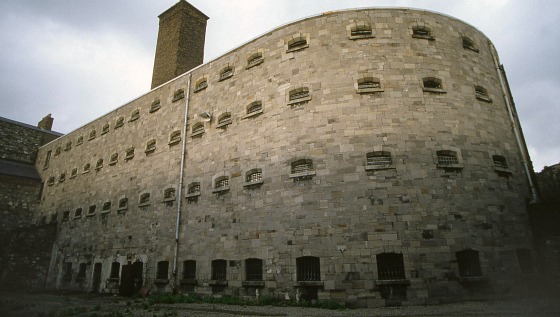
Kilmainham Gaol was one of Ireland’s most notorious prisons in its day. It was originally built in 1789 and used up until the 1920s and the main cell block is just as you’d imagine a Victorian prison to look. We took a guided tour and the guide was excellent. He explained all about its gruesome past and really gave us a sense of how this place was a symbol of the struggle against British rule and the fight for Irish independence. He also explained how the prison is now often used for film and TV appearances. You’ll recognise it from movies like The Italian Job and In The Name of The Father.
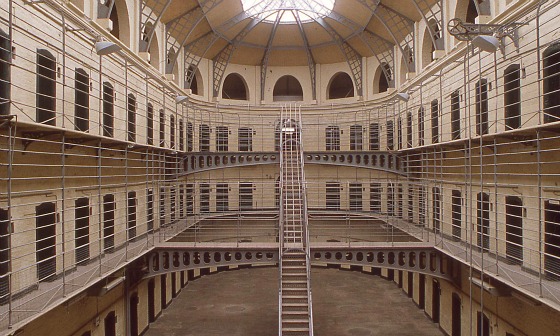
Kilmainham was decommissioned as a jail in 1924 by the Irish Free State government. Considering its history, no-one wanted to preserve it and it began to decay. The demolition of the building was even considered in 1936. An official inspection after world war 2 found that it was in a ruinous condition. Things only changed for the gaol when a preservation society was given the keys in 1960.
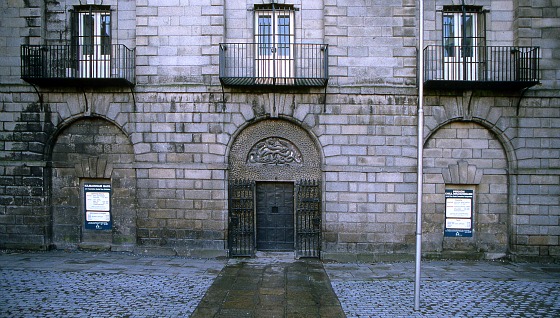
Kilmainham Gaol is open every day from April to September between 9.30am and 6pm. From October to March, the gaol is open Monday to Saturday from 9.30am to 5.30pm and on Sunday from 10am to 6pm. Access is only available via the frequent tours which cost 8 Euros for adults (2021 prices). Tours are often booked up in advance, so please book ahead.
LOCATION & CONTACT
Address: Kilmainham Gaol Historical Museum, 2 Inchicore Road, Dublin 8, Ireland Tel: +353 1 453 5984 Email: [email protected]
The gaol is approximately 3 miles from Dublin City Centre. We used the Dublin Hop-on, Hop-off Bus Tour to get there. Alternatively, you can catch bus services 79, 79A, 78A & 51B all from Aston Quay in Dublin.
MORE ON KILMAINHAM GAOL
Kilmainham Gaol – Official Website Dublin Hop-on, Hop-off Bus Tour – Stops at Kilmainham Gaol Kilmaiham Gaol – Wikipedia Hotels near Kilmainham Gaol Historical Museum – Lowest price guarantee from Hotels.com Dublin Guide Books – Amazon.com (US & Canada) Dublin Guide Books – Amazon.co.uk (UK)
BACK TO…DUBLIN CITY GUIDE

- Washington D.C.
- Private Tours
Easy Access – Kilmainham Gaol, War & Revolution Tour
- Instant Confirmation
- 24 Hour Cancellation
- Explore and experience Irish history during an entertaining and engaging walking tour of Kilmainham Gaol, unchanged since 1924
- Enjoyed Timed Entry tickets to Kilmainham Jail
- Visit The Irish National War Memorial Gardens dedicated to the memory of the Irish soldiers who gave their lives in WWI
- Experience what life was like during the many Irish uprisings and WWI & WWII in Ireland
- Hear about the historical events that changed the course of Irish history from the 13th century to the present day
- Visit the actual prison cells and execution site of the Leaders of the 1916 uprising
- Enjoy the most extraordinary tour led by an expert local English-speaking guide
- Small groups of 20 people or fewer
Description
Learn about some of the most important events in Irish history and hear stories of great personal sacrifice and triumph on our extraordinary Kilmainham Gaol, War and Revolution Tour. We combine a fully guided Kilmainham Gaol tour with a fully guided visit to The Irish National War Memorial Gardens, dedicated to the memory of Irish soldiers who gave their lives in the Great War of WWI. With an expert guide on hand throughout (specially chosen for their knowledge and passion of this fascinating period in Irish history), you’ll discover how the Irish were governed for over 700 years by the English and the ensuing political and revolutionary events that’s shaped the Ireland of today. Travel through time to really understand the political heart of the Irish people and its leaders including Michael Collins played by Liam Neeson in the movie of the same name that was also filmed in part at Kilmainham Gaol.
The tour begins with a guided walking tour of Kilmainham Gaol to discover its fascinating history and the role it played in rallying the Irish people to pursue independence from Great Britain and Westminster. Once inside the jail you’ll discover its dark history while walking in the footsteps of many of its many inmates, including; men, women and children. Explore Irish and English politics while your professional and engaging OPW Kilmainham Gaol guide tells you about some of its more famous inmates including the Leaders of the 1916 Rising, not only men but women too including Countess Markievicz an Irish politician, revolutionary, nationalist, suffragette and socialist who was imprisoned in Kilmainham Gaol awaiting execution as a result of her participation in the 1916 Rising. You’ll see and visit some of the cells of its most famous inmates as well as some of its youngest.
With small groups of only 20 people or fewer, our Kilmainham Gaol, War & Revolution Tour will be personal and unhurried, with a passionate and friendly guide. Walk over history while discovering the main places and players that shaped the Ireland of today.
Finally, you will also enjoy the Gaol’s film history where the following movies were filmed;
The Italian Job, The Adventures of Young Indiana Jones, The Babe, Michael Collins, In the Name of the Father
Good to Know
- Tour includes €8 ticket for timed entry to The Gaol.
- This tour is led by an expert local English speaking guide, with the Official Kilmainham Gaol tour conducted by an OPW Kilmainham Jail Guide.
- Experience over 200 years of Irish history dramatized in extraordinary guide stories.
- See a fascinating audio visual show detailing the history of this significant building.
- Visit & see the actual prison cells of the largest preserved Victorian jail in Europe.
- Visit the execution site of the leaders of the 1916 Easter Rebellion.
- Walk the narrow cell corridors that have strong connections to the Irish struggle for independence.
- Entrance and fully guided tour of the Irish National War Memorial Gardens.
- See the banks of the River Liffey which witnessed the very first landing of the 9th Century Viking invasions.
- Hotel Pick Up / Drop-Off
- Transportation
- We cannot accommodate strollers or baby carriages.
- Wheelchairs, motorized scooters, or any other device to assist mobility are not recommended.
- Participants should be in good health, consult first with your doctor if you have any medical condition or are not used to regular exercise.
- Wear comfortable shoes as this tour involves a fair amount of walking, including over uneven surfaces, cobblestones, hills, inclines/declines and stairs.
- Operates in all weather conditions, please dress appropriately.
- Changes or cancellations requested less than 24 hours before the tour departure time are not possible.
- Anybody under the age of 18 years must be accompanied by an adult.

LetzGo City Tours is an exciting, innovative tour company offering extraordinary premium group tours of some of the most exciting cities of the world.

LetzGo City Tours is not responsible for content on external Web sites or links.

- Liechtenstein
- Netherlands
- Switzerland
- Solo Location Guides
- Solo Travel Advice
- Solo Inspiration
- Luxury travel
DESTINATIONS , EUROPE , IRELAND
Visiting kilmainham gaol, dublin: birthplace of modern ireland.
Pat, our Kilmainham Gaol tour guide, pointed towards the damp tricolour, animated by gusts of bitter March wind whipping across the Stonebreakers’ Yard.
“Green is the colour of the Republic,” he explained. “Orange symbolises the Protestants and white represents the hope for a lasting peace between the two cultures in Ireland. This is the birthplace of modern Ireland.”

Visiting Kilmainham Gaol in Dublin – Europe’s largest unoccupied prison – is a journey into Irish Republican history.
This national monument is the site of the incarceration and execution of some of those who fought for Irish freedom, most famously the key players of the 1916 Easter Rising. This is their story and the dominant narrative running through a tour of this Dublin jail.
IN THIS ARTICLE
Kilmainham Gaol Tour & Its History
Visiting Kilmainham Gaol is a moving and evocative experience. Its tour is highly informative, and the stories told are haunting, from those of famous political leaders to those of ordinary citizens. As a journey through Irish history, a Kilmainham Gaol tour is hard to beat.
The Great Famine
When Kilmainham first opened its doors in 1796 as the county gaol for Dublin , it was conceived as a new reform prison, advocating and fostering reform through a harsh regime of discipline and fear.
Conditions were grim. Up to five prisoners were incarcerated in one cell, just 28 sq. meters in size, with a single candle as the only source of heat and lighting. The windows lining the narrow corridor had no glass, granting the cells’ inhabitants the benefits of ‘therapeutic’ fresh air.

These early prisoners included women, who were incarcerated at Kilmainham Gaol until it became an all-male prison in 1851. Children too. Arrested for petty theft, the youngest reported prisoner was seven years old.
The Great Famine (1845 – 1849), caused by the blight of the potato crop, increased overcrowding at Kilmainham Gaol. The potato was the staple diet of the Irish people and, rather than die of starvation or an associated illness, some people resorted to deliberate incarceration in the quest for free food. Prison catering depended on the class of prisoner, but a typical meal comprised oatmeal, bread and milk.
Overcrowding was amplified by the Vagrancy Act of 1847. Intended to rid the streets of the unwashed poor, it resulted in swamping the gaol with those arrested for begging.
Kilmainham Gaol & the fight for Irish independence
Kilmainham Gaol is better known for – and is symbolic of – the fight for Irish independence . The leading figures in every rebellion against British rule since 1798 have been detained here.
Henry Joy McCracken , imprisoned in 1796, was the first in a long list of political prisoners incarcerated in Kilmainham Gaol. Seven years later, in 1803, Robert Emmet ’s failed rebellion against British rule led to his incarceration and public hanging. His speech from the dock threw down the gauntlet to future generations of Irish nationalists:
When my country takes her place among the nations of the earth, then and not till then, let my epitaph be written Robert Emmett
Robert Emmet’s death mask can be seen in Kilmainham Gaol Museum.

The 1916 Easter Rising
The most significant rebellion against British rule, particularly in symbolic terms, was the 1916 Easter Rising, whose leaders were incarcerated in Kilmainham Gaol’s so-called 1916 corridor .

On 24 th April 1916 (Easter Monday), Patrick Pearse read out a proclamation from the steps of the General Post Office (GPO), declaring Ireland to be an independent republic. Over the next six days, around 1550 men under the command of Pearse, and a further 220 led by James Connolly of the Irish Citizen Army, seized control of strategic buildings in central Dublin.
Hopelessly outnumbered by around 20,000 British soldiers and facing overwhelming odds, the rebels eventually surrendered. 97 rebels were condemned to death under martial law imposed by the British Army. Fourteen of these were executed by firing squad in the Stonebreakers’ Yard at Kilmainham Gaol.
Poets and teachers and dreamers
The fighters of the 1916 Rising have been cast into the roles of romantic heroes, seeking Ireland’s freedom through self-sacrifice. In the words of Pat, our Kilmainham Gaol tour guide:
These were not military men. They were poets and teachers, men and women, dreaming of a new Ireland
Take Countess Constance Markiewicz, who hailed from an Anglo-Irish family in County Sligo and was married to a Polish Count. She became involved in the Irish Cultural Movement and took part in The Easter Rising as a member of the Irish Citizen Army.
Her death sentence was commuted to life imprisonment and she was transferred to Aylesbury Prison in England. On her release in 1917, as part of a late amnesty, she became the first woman to be elected to the House of Commons.
However, Countess Markiewicz never took up her seat. Instead, in 1919 she established an Irish political assembly, Dáil Éireann, with similarly elected compatriots.
Some of these rebel leaders left behind wives and children.
Countess Markiewicz’s commander, Michael Mallin , was not spared the death sentence. Executed by firing squad, he left behind a pregnant wife and four children.
Joseph Plunkett was another leader of the 1916 Easter Rising. Seven hours before his execution, he married his fiancée, Grace Gifford , in the prison chapel. Two British soldiers acted as witnesses.
After the ceremony, he was taken back to his cell, leaving his new wife behind. Grace never remarried.
East Wing of Kilmainham Gaol
Leaving the Easter Rising and the 1916 corridor, we reach the East Wing of Kilmainham Gaol.
The Victorian era was the golden age of prison building and their design was underpinned by two principles: separation and inspection. The separation of prisoners broke up communities of corruption and vice, leaving an isolated inmate exposed solely to the reforming influence of prison staff. Inspection allowed prison guards a greater level of oversight.

In 1861, Kilmainham Gaol was extended and modelled on these principles.
Echoing Jeremy Bentham’s Panopticon – “the all-seeing eye” – prison guards could keep watch on all prisoners incarcerated in 96 single cells. The narrow corridors were gone and in their place were catwalks in a vaulted space with an enormous skylight.
The fate of Kilmainham Gaol
Kilmainham Gaol finally closed its doors in 1924. Éamon de Valera , who would go on to be the president of Ireland, was one of its last prisoners.
For many years, the building was left to fall into ruin, shutting its doors on a painful period of Irish history. But time heals, and in 1960 a Board of Trustees was established to restore the gaol as a national monument.
Today, Kilmainham Gaol is also used extensively as a filming location . In The Name of The Father, Michael Collins, The Italian Job (one of the best movies set in Italy ) and, more recently, Paddington 2 are among the films shot there.
And Dublin’s favourite sons, U2, shot their 1982 single A Celebration here.
The legacy of the Easter Rising
Visiting Kilmainham Gaol leaves you in no doubt of the self-sacrifice of the rebels, whose actions were a turning point in the birth of modern Ireland. In particular, the 1916 Easter Rising had a profound effect on Irish history and is embedded into the national psyche of its people, amongst whom I count myself.
However, the Easter Rising has its critics.
It left a 10-month war of independence and a brutal civil war in its wake. And it is sobering that violence succeeded where politics had failed.
Although a political outlier, John Bruton, the former Irish Taoiseach, suggested the Easter Rising had “damaged the Irish psyche” and “led directly to the violence experienced subsequently”, arguing that the events of 1916 have been used to justify violence in later years. Some critics argue that the rebels had no democratic mandate.
However, equally, the British did not have a democratic mandate to govern Ireland, maintaining control by force. For its part, the UK has never apologised for the actions of its army in quashing the uprising.

How to Get to Kilmainham Gaol
Kilmainham Gaol is located on Inchicore Rd, Kilmainham, Dublin 8, D08 RK28. The entrance is through the former Kilmainham Courthouse.
Kilmainham Gaol is a 15 – 20 minute walk from Dublin Heuston mainline station. The route is clearly signposted. It is served by the Luas Red Line. The nearest stop is Suir Road. Dublin Bus routes: no. 60 from Wellington Quay or Heuston Station, G1/G2 from Spencer Dock or Wellington Quay stop close by. Kilmainham Gaol does not have a car park . Parking is available at the nearby Irish Museum of Modern Art/Royal Hospital Kilmainham. From here, it is a five-minute walk to the Gaol via West Avenue and Richmond Gate.
Tours and Tickets
The gaol is open for visit by guided tour only. Your ticket includes admission to the museum.
You can visit Kilmainham Gaol throughout the year. Opening hours are seasonal which you can check here . As this is a popular attraction, I strongly recommend pre-booking online to avoid disappointment. Tickets can be booked 28 days in advance . Cancellation tickets for the day are released online every morning between 9:15 am-9:30 am.

Tips for Visiting Kilmainham Gaol
- The tour of Kilmainham Gaol takes around one hour. I highly recommend setting aside a further hour to visit the museum, which is adjacent to the gaol and is arranged on three levels.
- No food or drink, except still water, is permitted. Gum chewing is also prohibited.
- Photography is allowed throughout the tour but video and audio recordings are not permitted
- Dress warmly. Parts of the tour take place outdoors but it can also be cold inside the gaol.

About Bridget
Bridget Coleman has been a passionate traveller for more than 30 years. She has visited 70+ countries, most as a solo traveller.
Articles on this site reflect her first-hand experiences.
To get in touch, email her at [email protected] or follow her on social media.
Crumlin Road Gaol Experience, Events, Weddings & Venue Hire
Visitor Attraction Northern Ireland
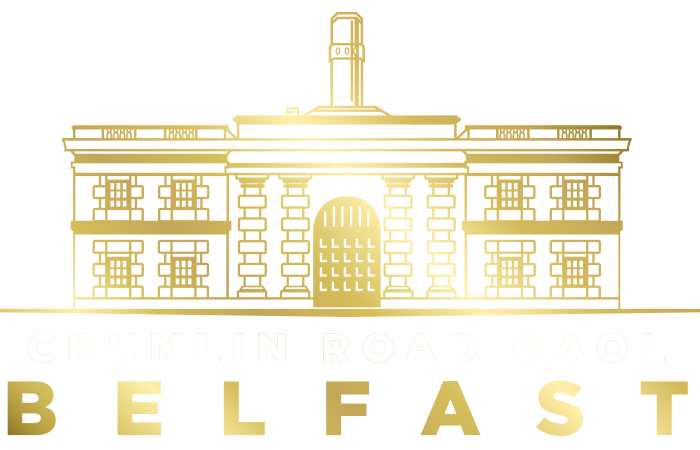
CRUMLIN ROAD GAOL TOURS

Guided Gaol Experience
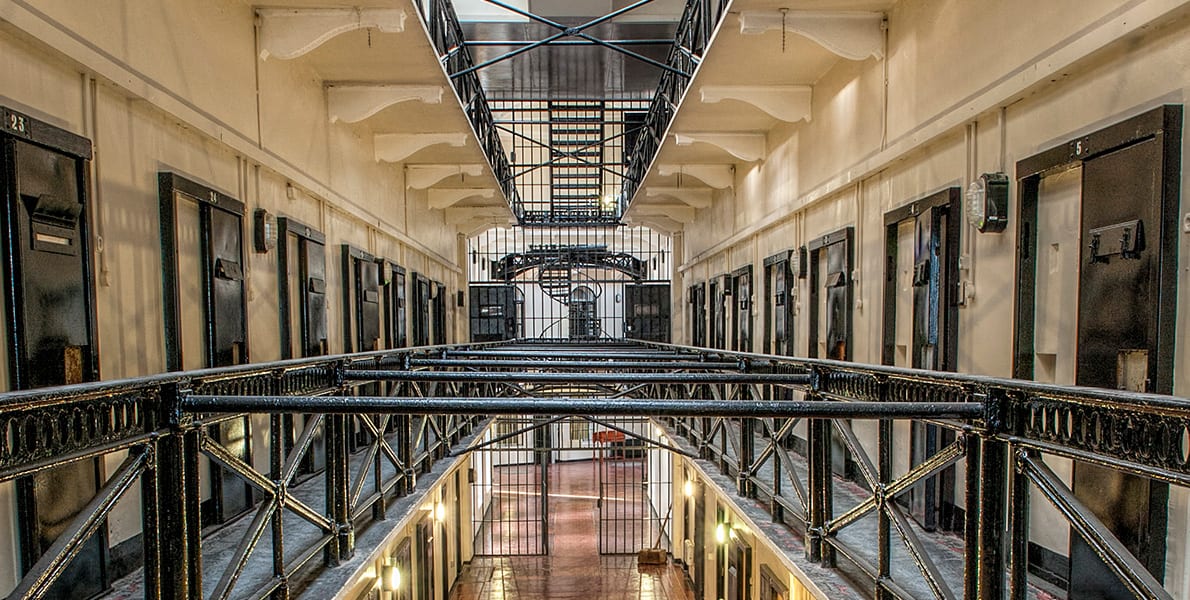
The Crumlin Road Gaol dates back to 1845, and closed its doors as a working prison after 150 years in service in 1996. The Gaol has re-opened as a visitor attraction after extensive renovations and today you can take a guided tour of the prison.
About the Tour Discover over 150 years of history and follow in the footsteps of over 25,000 prisoners as you make the journey through Northern Ireland’s only remaining Victorian Era prison. The guided tour will allow you to explore the building’s colourful past and gain a unique and memorable insight into the daily lives and routines of both prisoners and prison officers over the Gaol’s existence. Your tour guide will inform you about the Gaol’s history including when women and children were imprisoned, the executions that were carried out, its more recent history and learn about why the decision was taken to close the prison.
The will cover all aspects of the Gaol from the Tunnel linking the courthouse on the other side of the Crumlin Road to the Hanging Cell, the Historic Holding Cells, Centre Circle, C-Wing and Graveyard. Guided Tours will give you access to all areas included on the self-guided Crumlin Road Gaol Experience, you will also have exclusive access to additional areas not included on the self-guided tour. Tours are conducted by one of our expert guides.
Information & Terms
- Suitable warm clothing and flat shoes must be worn.
- The main entrance to the Gaol is via the Gate House on the Crumlin Road.
- Coaches & Cars may enter the site via the Summer Street entrance and follow the appropriate traffic management signs.
- Admission tickets can be purchased on the day but we advise pre-booking to avoid disappointment.
- We recommend that you arrive at least 10 to 15 minutes prior to the tour time, to enable tickets to be checked or to be purchased (non-groups) .
- Please note there are no senior, student or child tickets available for the guided tours.
For groups of 15 people or more, please email our group booking team at [email protected] or contact their office on 02890741500
Please note all tickets are non-transferable and non-refundable
Frequently Asked Questions
Please see below for answers to questions and queries frequently asked by visitors to Kilmainham Gaol.
How do I visit Kilmainham Gaol and should I book in advance?
Access to Kilmainham Gaol is by guided tour only. Pre-booking on-line is the only way to guarantee entry on the day and at the time of your choice. Please check the website for availability. Additional/cancellation tickets for the day are released on-line between 9:15am – 9:30am. Visitors with special needs or special requirements should contact us directly to arrange their visit. Please e-mail [email protected]
How far in advance can I book tickets?
Tickets can be purchased online 28 days in advance. Tickets are released at midnight (Irish time).
How do I make a group booking?
All groups with 10 or more people must be booked in advance by contacting [email protected] Please note that group bookings are allocated on a first come first served basis. Due to the high demand for group bookings it is not possible to facilitate all requests.
What should I do if I cannot print my tickets?
We can print tickets at the reception desk upon arrival. All we need is the booking reference number or the name or email address used to make the booking.
Can I transfer my ticket to another day/time or receive a refund?
Tickets are non-transferable and non-refundable. However, if you book a tour for an incorrect day/time, please inform us by e-mail within one hour of making the booking and we can refund your credit/debit card. Please see terms and conditions .
How long is the guided tour?
The guided tour of Kilmainham Gaol takes 1 hour. Visitors should allow an additional 30-45 minutes to explore the museum after the tour. Visitors with tickets for the final two tours of the day are welcome to visit the museum before the start of their guided tour.
I have a Heritage Card. Do I still need to buy a ticket on-line?
Please book a complimentary ticket on-line under the appropriate Heritage Card User link. You will need a Heritage Card to validate the ticket. Heritage Cards can be purchased on the day of your visit at Kilmainham Gaol Museum or at any other OPW site.
Is Kilmainham Gaol wheelchair accessible?
Yes. We can organise a ground floor tour for wheelchair users or visitors with mobility issues. Visitors should contact us in advance. [email protected]
Do you accept international student cards?
We accept all valid student cards. You must produce your card on arrival to validate your ticket. Please note visitors under 18 must be accompanied by an adult.
Is Kilmainham Gaol suitable for young children?
Due to the nature and duration of the guided tour, Kilmainham Goal is not recommended for children under the age of 6. Visitors should also note that children’s buggies/strollers are not permitted on the tour.
Are the guided tours in other languages?
Guided tours are currently offered in English and Irish. An information leaflet is available online in English, Gaeilge, Español, Italiano, Deutsche, and Français. http://kilmainhamgaolmuseum.ie/plan-a-visit/
Are there parking facilities at Kilmainham Gaol?
Kilmainham Gaol has no car parking facilities. Parking is available at the nearby Irish Museum of Modern Art/Royal Hospital Kilmainham – access via East Gate, Military Road. The car park is a 5 minute walk to the Gaol via West Avenue and Richmond Gate.
Is there a secure area to leave personal belongings?
Kilmainham Gaol currently has no secure lockers for luggage. However, there is a designated space in the entrance hall where visitors are welcome to leave large personal belongings. The area is covered by CCTV camera but Kilmainham Gaol accepts no responsibility for any lost or stolen items.

IMAGES
VIDEO
COMMENTS
Kilmainham Gaol was a prison for over 100 years and a witness to Irish history. Learn about the stories of prisoners, rebels and leaders who shaped Ireland's independence. Book tickets online for guided tours and access to the museum.
Kilmainham Gaol is a former prison and museum in Dublin, open all year round except December. Book online tickets for guided tours and access the museum, café and gift shop.
Learn about the fascinating history of Kilmainham Gaol, one of the best tours in Dublin. Find out how to get there, what to see and do, and how to book tickets for this former prison and museum.
Guided tours of Kilmainham Gaol in Dublin last about one hour. It is recommended for visitors to arrive at least 15 minutes before their scheduled tour time (pre-booking tickets is advisable). Most people spend about 90 minutes to two hours at the jail, including a visit to the on-site museum.
Book Tickets | Kilmainham Gaol Museum. <break>. When you visit a website, it may store information in or read it from your browser, mostly in cookies. This information might be about you, your preferences or your device. It is mainly used to make the site work better and gather visitor statistics. It does not usually directly identify you, but ...
Before its closure in 1924, Dublin's Kilmainham Gaol housed some of the most famous political and military leaders in Irish history. The prison is considered a must see in Dublin and offers a panoramic insight into some of the most profound, disturbing and inspirational themes of modern Irish history. ... The visit includes a 1 hour guided tour ...
Established in 1796, Kilmainham Gaol is an old prison in Dublin. It has housed many nationalist prisoners that fought for Ireland's independence. Established in 1796, Kilmainham Gaol is an old prison in Dublin. ... Free Walking Tour of Dublin. 9.42 25874 reviews . Free. book. Cliffs of Moher, Doolin, Burren, & Galway Day Trip. 8.94 177 ...
Luas. Suir Road on the Luas Red Line is the closest Luas stop - this is 750 metres away. Kilmainham Gaol is a former prison in Kilmainham, Dublin. It is now a museum run by the Office of Public Works. Tours at Kilmainham give a great overview of the prison, and its significance in many key events in Irish history. Plan your visit to Kilmainham.
Kilmainham Gaol Museum. Kilmainham Gaol is one of the largest unoccupied gaols in Europe. It opened in 1796 as the new county gaol for Dublin and finally shut its doors as such in 1924. During that period it witnessed some of the most heroic and tragic events in Ireland's emergence as a modern nation. Among those detained - and in some ...
Kilmainham Gaol Museum stands as a powerful testament to Ireland's turbulent history and the fight for independence. This former prison, located in Dublin, has witnessed the incarceration of many notable figures who played pivotal roles in shaping Ireland's destiny. Today, it stands as a museum, offering visitors a poignant and immersive ...
Big Bus Dublin Hop on Hop off Sightseeing Tour with Live Guide. 1,132. Audio Guides. from . $36.00. per adult. The History of Dublin With Locals: 1916 Easter Rising PRIVATE Tour. 27. ... Brilliant way to end your Easter Rising tour, as Kilmainham Gaol is the place where Conolly and others were executed. Museum/Jail is located in center city ...
Address: Kilmainham Gaol Museum Visitor Centre, Kilmainham Courthouse, Inchicore Road, Kilmainham, Dublin 8, Ireland. D08 RK28. Email: [email protected]. Phone: +353 1 4535984. Kilmainham Gaol Tours. If you want to join tours, below are our recommended hop-on hop-off bus tours to Kilmainham Gaol.
Address: Kilmainham Gaol Historical Museum, 2 Inchicore Road, Dublin 8, Ireland. Tel: +353 1 453 5984. Email: [email protected]. The gaol is approximately 3 miles from Dublin City Centre. We used the Dublin Hop-on, Hop-off Bus Tour to get there. Alternatively, you can catch bus services 79, 79A, 78A & 51B all from Aston Quay in Dublin.
Tour includes €8 ticket for timed entry to The Gaol. This tour is led by an expert local English speaking guide, with the Official Kilmainham Gaol tour conducted by an OPW Kilmainham Jail Guide. Experience over 200 years of Irish history dramatized in extraordinary guide stories.
The East Wing. This new wing was built in the 1860s, to the design of architect John McCurdy, and reflected the new ideals of Victorian prison theory. Modelled on Jeremy Bentham's Panopticon, every cell is visible from a central platform. There are ninety-six cells in all. Light is particularly important in this East Wing.
Kilmainham Gaol is located on Inchicore Rd, Kilmainham, Dublin 8, D08 RK28. The entrance is through the former Kilmainham Courthouse. Kilmainham Gaol is a 15 - 20 minute walk from Dublin Heuston mainline station. The route is clearly signposted. It is served by the Luas Red Line.
Dublin: Hop-on Hop-off Tour with Live German Commentary. The DoDublin live German city tour operates on Wednesdays, Fridays and Saturdays only. Tours depart at 10:15, 12:15 and 15:15. Your ticket can be used on any DoDublin Hop-on hop-off bus however, so you can enjoy recorded commentary in German at any time.
A tour of Kilmainham Gaol is a poignant and evocative experience that offers fascinating, albeit harrowing, insight into prison life. Zoom out. What's this place all about? Kilmainham Gaol (jail ...
The Gaol has re-opened as a visitor attraction after extensive renovations and today you can take a guided tour of the prison. About the Tour Discover over 150 years of history and follow in the footsteps of over 25,000 prisoners as you make the journey through Northern Ireland's only remaining Victorian Era prison. The guided tour will allow ...
Model of Kilmainham Gaol. Kilmainham Gaol (Irish: Príosún Chill Mhaighneann) is a former prison in Kilmainham, Dublin, Ireland.It is now a museum run by the Office of Public Works, an agency of the Government of Ireland.Many Irish revolutionaries, including the leaders of the 1916 Easter Rising, were imprisoned and executed in the prison by the orders of the UK Government.
Kilmainham Gaol is located west of the Dublin city centre, past Heuston station. It's easily accessible by public transportation, hop-on-hop-off buses, or if you're in the mood, it's a nice walk along the River Liffey. Kilmainham Gaol Tour. The tour of Kilmainham Gaol starts in the courthouse, which was open between 1820 & 2008.
Access to Kilmainham Gaol is by guided tour only. Pre-booking on-line is the only way to guarantee entry on the day and at the time of your choice. Please check the website for availability. Additional/cancellation tickets for the day are released on-line between 9:15am - 9:30am. Visitors with special needs or special requirements should ...
Contact and more info. Address: Inchicore Rd, Kilmainham, Dublin 8, Dublin. Email: [email protected]. Website: www.kilmainhamgaolmuseum.ie. Phone: +353 1 453 5984. Price: €8 for adults, €6 for seniors with ID, €4 for children 12-17 and students with ID, plus €20 for family, free for children under 12.